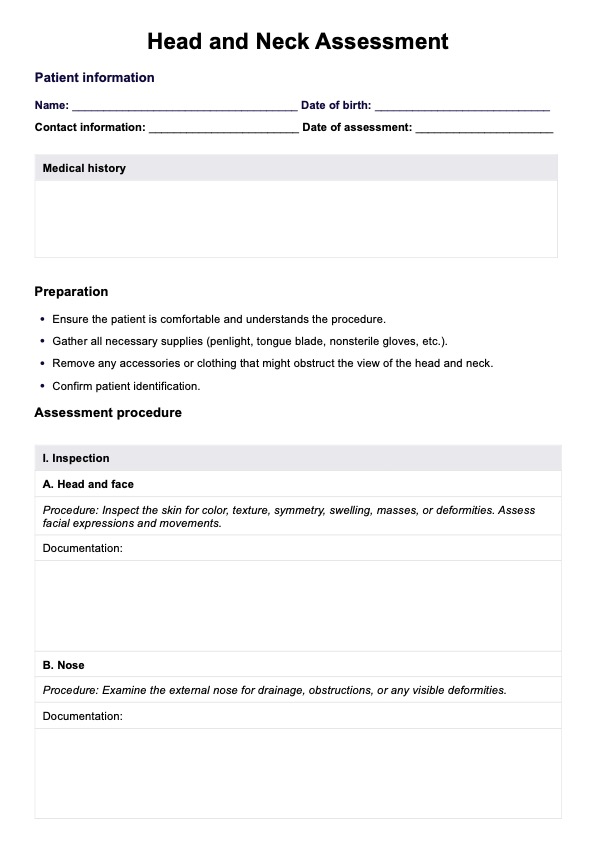A Head and Neck Assessment includes inspection, palpation, and additional evaluations to examine the head, face, eyes, ears, nose, oral cavity, neck, lymph nodes, thyroid gland, and cranial nerves. It focuses on identifying abnormalities, structural irregularities, neurological deficits, and signs of underlying medical conditions.

Head and Neck Assessment
Access our free comprehensive Head and Neck Assessment template and effectively support clinical evaluations and improve diagnostic accuracy.
Head and Neck Assessment Template
Commonly asked questions
Normal findings include symmetrical facial features, even skin tone, intact cranial nerve function, clear oral mucosa, midline trachea, non-palpable lymph nodes, and full range of motion in the cervical spine. The temporomandibular joint moves smoothly without pain, the thyroid is non-enlarged, and there are no visible or palpable abnormalities.
Observations include facial symmetry, skin integrity, swelling, abnormal movements, cranial nerve function, lymph node enlargement, and tracheal position. Clinicians also evaluate speech clarity, swallowing ability, and musculoskeletal alignment to detect any neurological or structural abnormalities.
EHR and practice management software
Get started for free
*No credit card required
Free
$0/usd
Unlimited clients
Telehealth
1GB of storage
Client portal text
Automated billing and online payments











